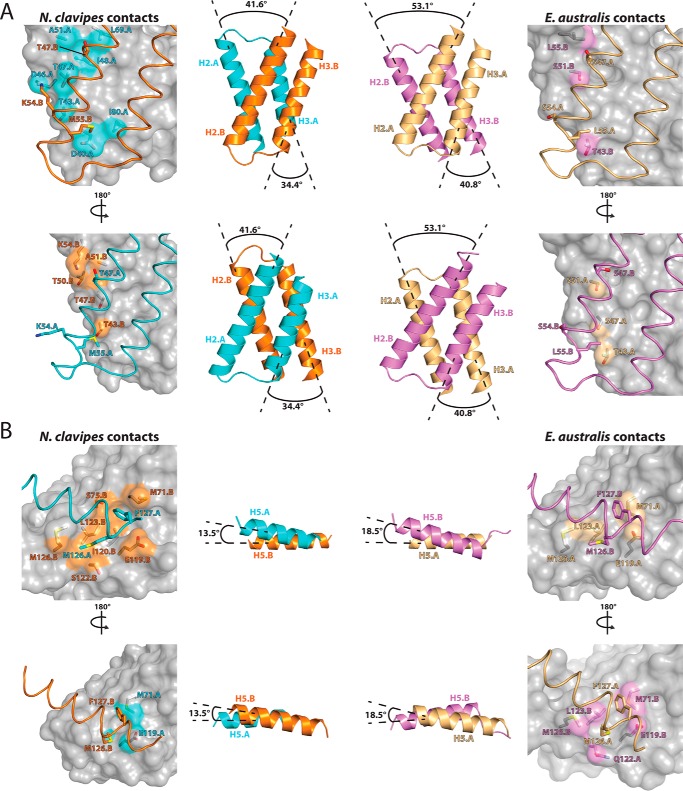FIGURE 4.
Differences in the topology of the subunits at the NTD dimer interface results in unique intermolecular contacts. A, top, in the left (NcNTD) and right (EaNTD) panels, one NTD subunit of each dimer is shown as a semitransparent gray surface, and the other is shown as ribbons for the H2/H3 dimer interface. Side chains of residues that engage in novel contacts resulting from the altered interfacial helix topologies are shown as sticks, and the surface is colored as in the center panel. Bottom, to allow for comparison of contacts at the opposite side of the NTD dimer interface, the structures were rotated 180° about the y axis and are presented in the same manner as in the top row. Middle, to illustrate the differences in how the interfacial helices are arranged at the dimer interface, we calculated the angles at which H2/H3 cross each other in the NcNTD and EaNTD structures, which are shown in the same orientation as ribbons. Angles were calculated using the program Chimera. B, unique intermolecular contacts at the H5 dimer interface of the NcNTD (left) and EaNTD (right) are presented in the same manner as in (A). (middle) The angle at which H5.A crosses H5.B in each NTD structure is shown.

